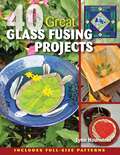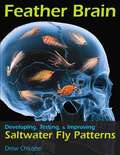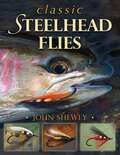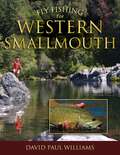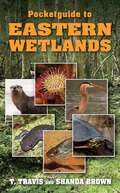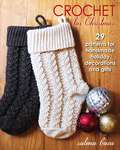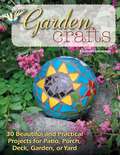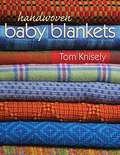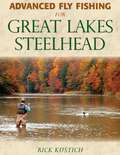- Table View
- List View
Einführung in die Soziologie: Band 1 – Theorien der Soziologie (Einführung in die Soziologie – Themen, Begriffe, Theorien, Forschungspraxis)
by Frank Hillebrandt Franka SchäferUm sich ihren Gegenständen zu nähern, benötigt die Soziologie allgemeine Theorien, die sich aus einer systematischen und argumentativ nachvollziehbaren Verwendung ihrer Fachbegriffe entwickeln. Der erste Band der vierbändigen Einführung in die Soziologie sensibilisiert für die Notwendigkeit soziologischer Theorien und ihrer Fachsprache. In einem ersten Teil thematisiert das Buch die Ausgangspunkte soziologischer Theoriebildung, indem frühe Theorien der Soziologie sowie die soziologische Verfestigung eines Theoriekanons kritisch diskutiert werden. Danach stellen führende Fachvertreter*innen im zweiten Teil einzelne Theorierichtungen vor: Phänomenologische Theorien, Interpretative Theorien, Pragmatistische Theorien, Kritische Theorien, Feministische Theorien, (Post)-Strukturalistische Theorien, Systemtheorien, Handlungsorientierte Theorien, Theorien sozialer Ungleichheit, Kultur- und Sozialanthropologische Theorien, Praxistheorien, Post- und Dekoloniale Theorien, Gendertheorien, Akteur-Netzwerk-Theorien, Theorien des Ästhetischen, Ökologische Theorien. Im dritten Teil gibt der Band Ausblicke auf zukünftige Herausforderungen soziologischer Theoriediskussionen.
Tunisian Crochet for Baby
by Sharon Hernes SilvermanVersatile and beautiful, Tunisian crochet is well suited for making baby clothes. This book contains 23 Tunisian projects to make for the babies in every crocheter's life.
Armored Champion
by Steven ZalogaArmor expert Zaloga enters the battle over the best tanks of World War II with this heavy-caliber blast of a book armed with more than forty years of research.
40 Great Glass Fusing Projects
by Lynn HaunsteinWhether you are new to glass fusing or a veteran glass crafter, you will find fresh ideas in this book.
Purely Primitive Dolls
by Barb MooreCreate one-of-a-kind dolls in a primitive folk-art style for unique gifts and home décor. These primitive weathered and worn character dolls will inspire you to make your own.
Steel Thunder on the Eastern Front (Stackpole Military Photo Series)
by Michael Olive Stackpole BooksVisual history of the artillery used by both sides on the Eastern Front in World War II.
Wet Flies
by Dave HughesDave Hughes has long believed that wet flies have an essential place in everyone's fly box and repertoire of trout tactics. That's why he has updated this 1995 classic with the benefit of the last two decades of developments in materials, tying, and fishing techniques.
101 Trout Tips
by Landon MayerEvery fly-fishing problem has a solution. This collection of advice from veteran instructor Landon Mayer helps you analyze your past mistakes and learn how to adapt to a wide range of fishing conditions.
Feather Brain
by Drew ChiconeStep by step tying instructions and explanations of how the author designed 14 winning saltwater flies.
Strip-Set
by George DanielA comprehensive book on tactics for streamers, including new approaches for trout, steelhead, muskie, and bass. Features over 450 detailed photos and illustrations of casting and presenting streamers.
Classic Steelhead Flies
by John SheweyThe definitive resource for tiers and anglers interested in the rich tradition of steelhead flies. Learn the histories of these classic flies, as well as how to tie them.
Fly Fishing for Western Smallmouth
by David Paul WilliamsFollowing the model of Bob Clouser's classic Fly Fishing for Smallmouth, this book provides important information geared specifically toward Western anglers.
Pocketguide to Eastern Wetlands
by T. Travis Shanda BrownMore than 200 plants, trees and shrubs, invertebrates, fish, amphibians, reptiles, mammals, and birds commonly found in eastern wetland habitats are featured in this detailed field guide.
Basic Glass Fusing (How To Basics)
by Lynn HaunsteinFrom Stackpole's bestselling Basics series, this book presents a fun, growing trend in glass crafts.
Crocheting Rugs
by Nola A. Heidbreder Linda PietzTurn your crochet talents--and hook--toward home to create decorative works of art for your floors.
Broomstick Lace Crochet
by Donna WolfeLearn an updated take on the vintage art of broomstick lace with easy-to-follow photo tutorials! Made using a super-huge needle (the "broomstick") and a crochet hook, this technique creates a very distinctive cluster lace stitch that's fun and fast to crochet.
Crochet for Christmas
by Salena BacaDecorate your home for the holidays with festive crocheted decorations, ornaments, and Christmas cozies! Need a quick holiday gift? This book has you covered there, too, with cute crocheted hats, cowls, and other accessories that work up in a jiffy.
Garden Crafts
by Elizabeth LetcavageThe perfect do-it-yourself guide for outdoor living accessories. Learn how to make 30 practical and decorative projects for use in the garden, courtyard, patio, deck, or porch.
Knitted Beanies & Slouchy Hats
by Diane ServissIn Knitted Beanies & Slouchy Hats, Diane Serviss, the design force behind the fantastically successful Pixiebell, offers up 31 original designs in an incredible range of styles, utilizing a wide variety of textured stitches and colorwork techniques.
Tying the Founding Flies
by Mike VallaFly fishing has a rich heritage of "founding flies" that revolutionized the sport, yet many of these classic flies have fallen out of use. In this follow-up to The Founding Flies, Mike Valla includes detailed instructions to help anglers tie and fish these historic, effective patterns.
Handwoven Baby Blankets
by Tom KniselyWhat better way to welcome that precious, tiny new person than with a luxurious, handwoven blanket! These beautiful, colorful designs will appeal to today's contemporary moms, as well as lovers of traditional weaves.
Advanced Fly Fishing for Great Lakes Steelhead
by Rick KustichTactics for Great Lakes steelhead, including new two-handed and switch rod techniques and Spey and tube flies.
Colorwork Knitting
by Sarah E. WhiteIn fashion the right colors--and the right combinations--can make the difference between pretty and pretty spectacular! But what makes a winning color combination? Whether you know instinctively or need a little help, Colorwork Knitting gives you the tools you need to explore your love of color and takes the fear out of multicolor knitting.
Knitted Wraps & Cover-Ups
by Annie ModesittIf cool summer nights or too much air-conditioning give you cold shoulders, take the chill off with fashionable knit accents that will keep you just as warm as you want to be!
First Winter on the Eastern Front (Stackpole Military Photo Series)
by Michael Olive Robert J. EdwardsPhoto chronicle of the German-Soviet campaign on the Eastern Front during its first brutal winter after Operation Barbarossa ground to a halt outside Moscow.



